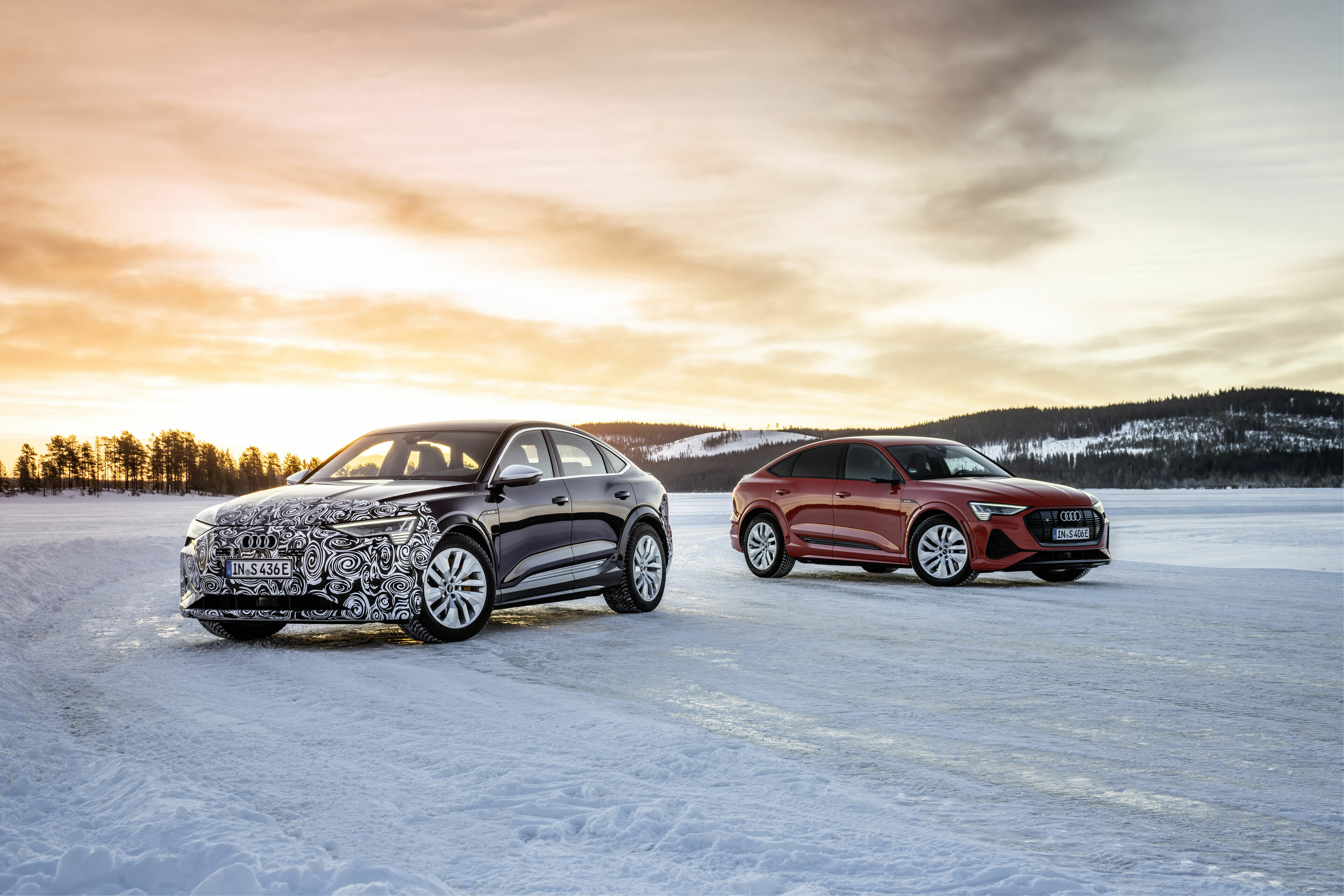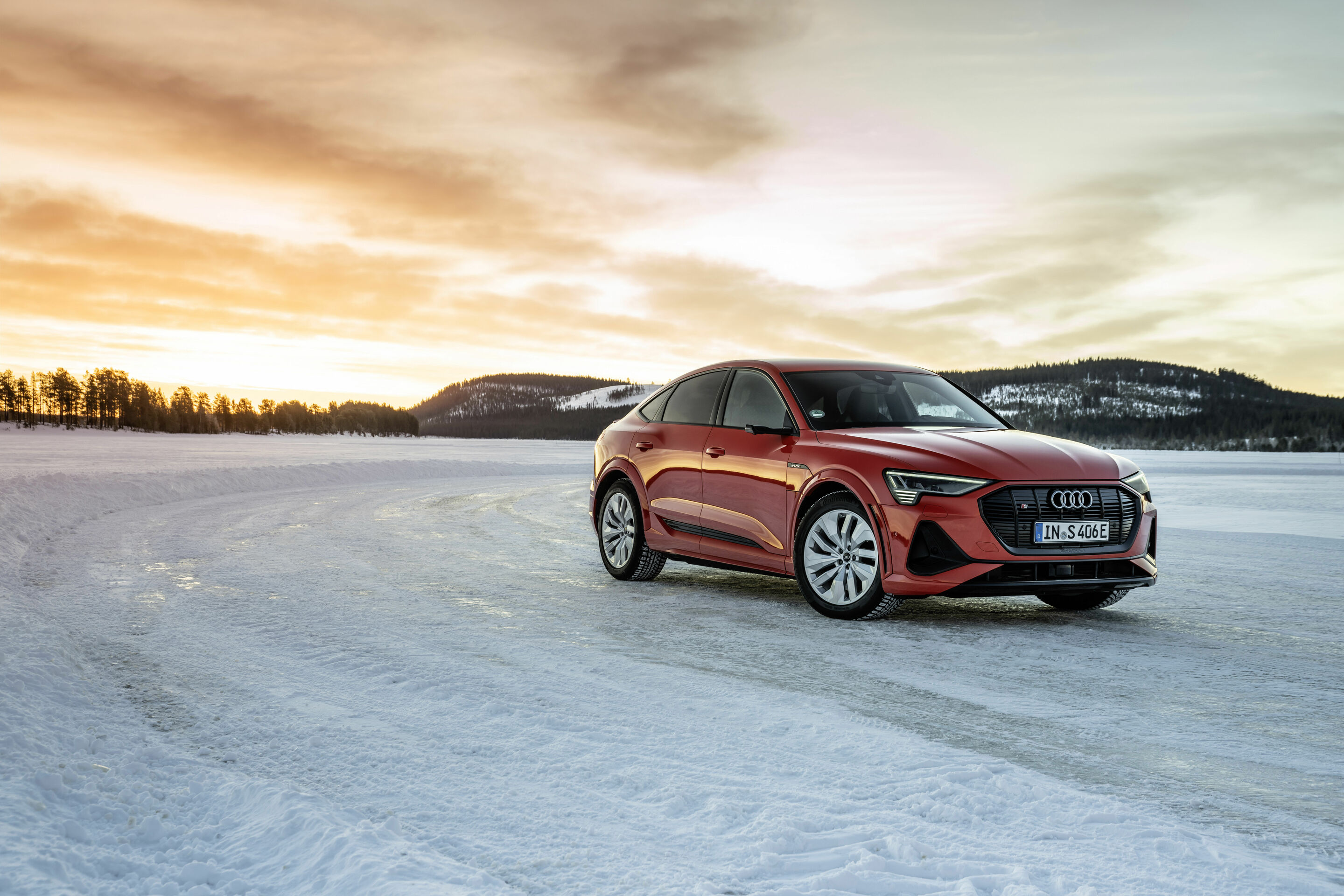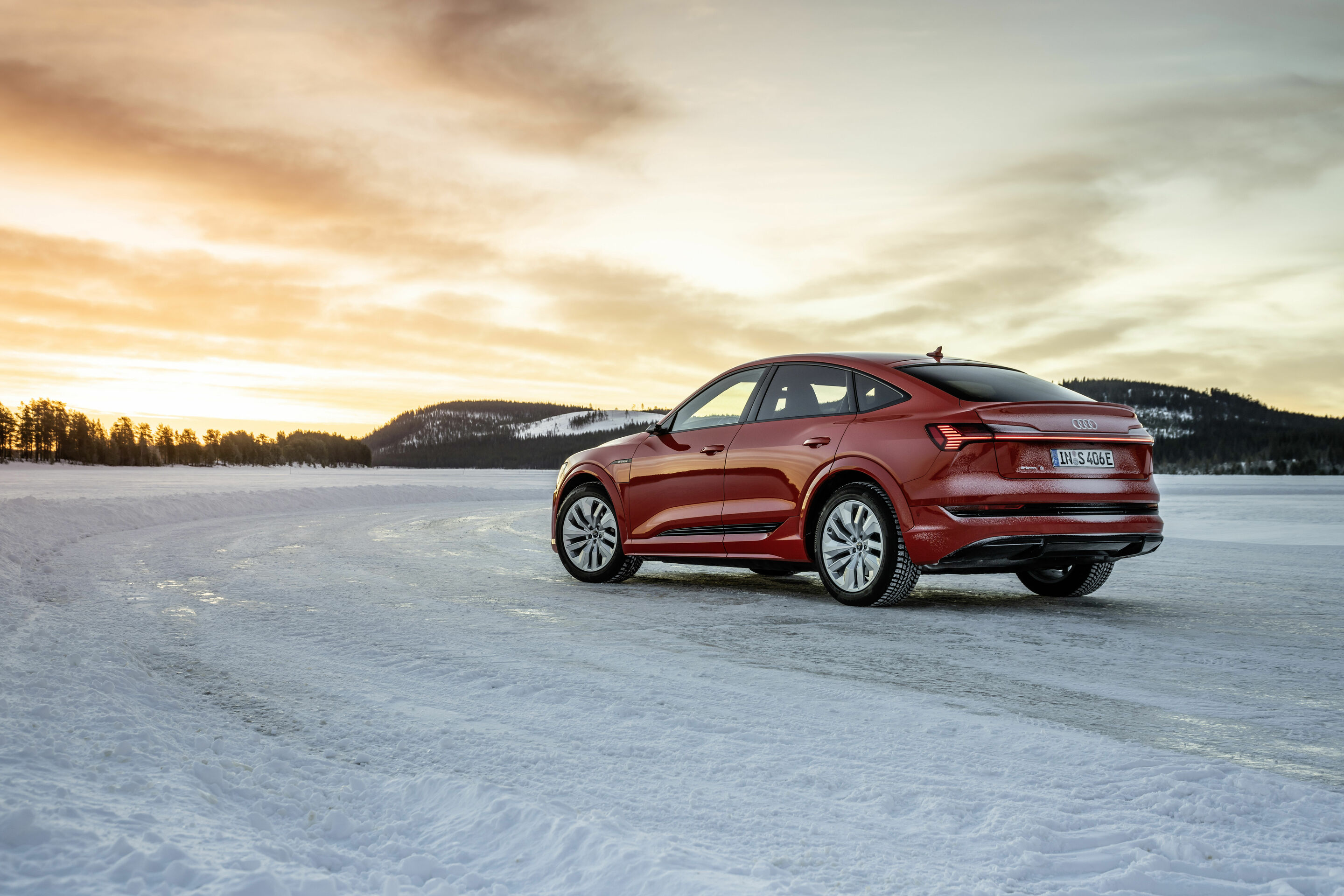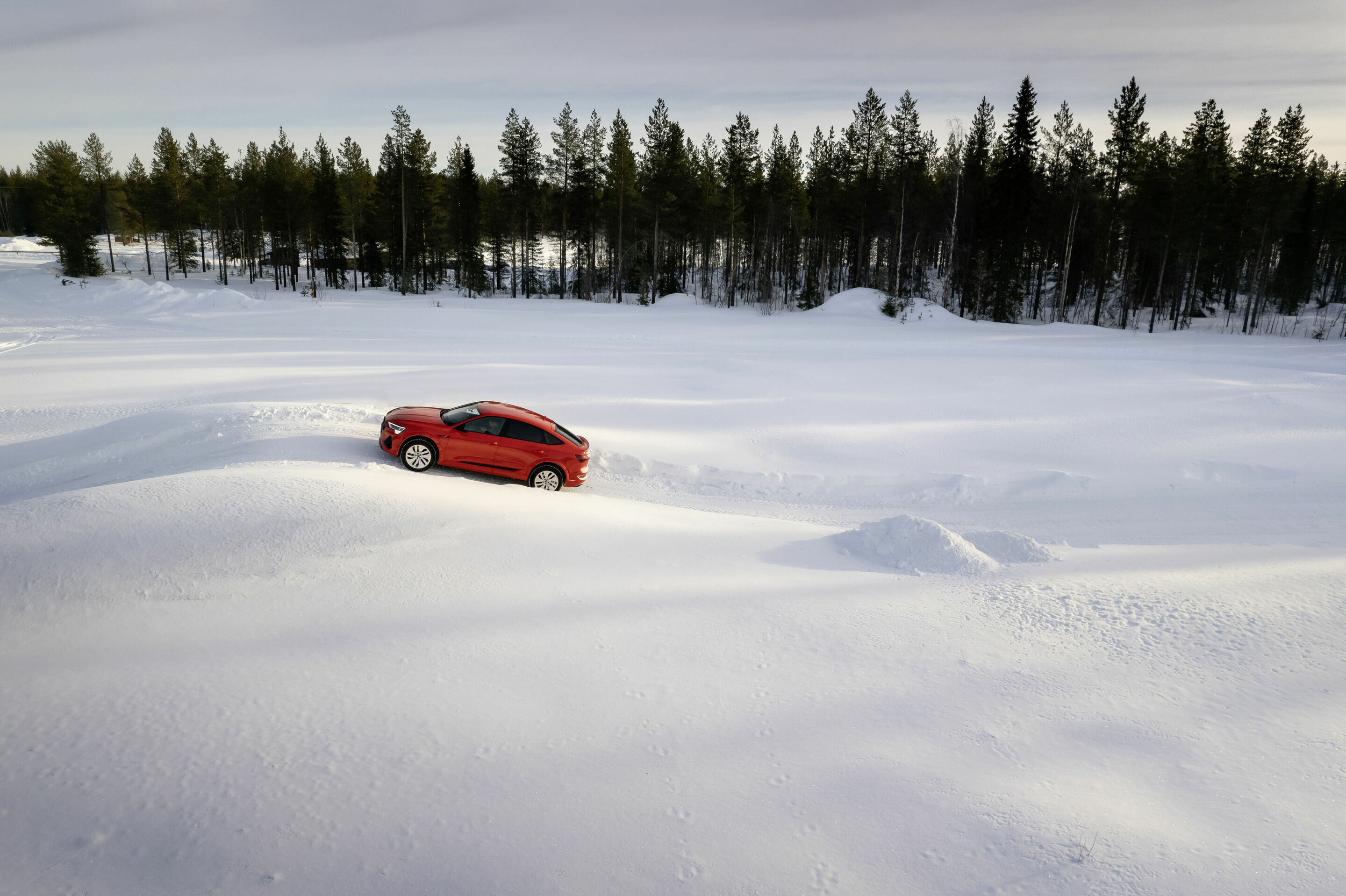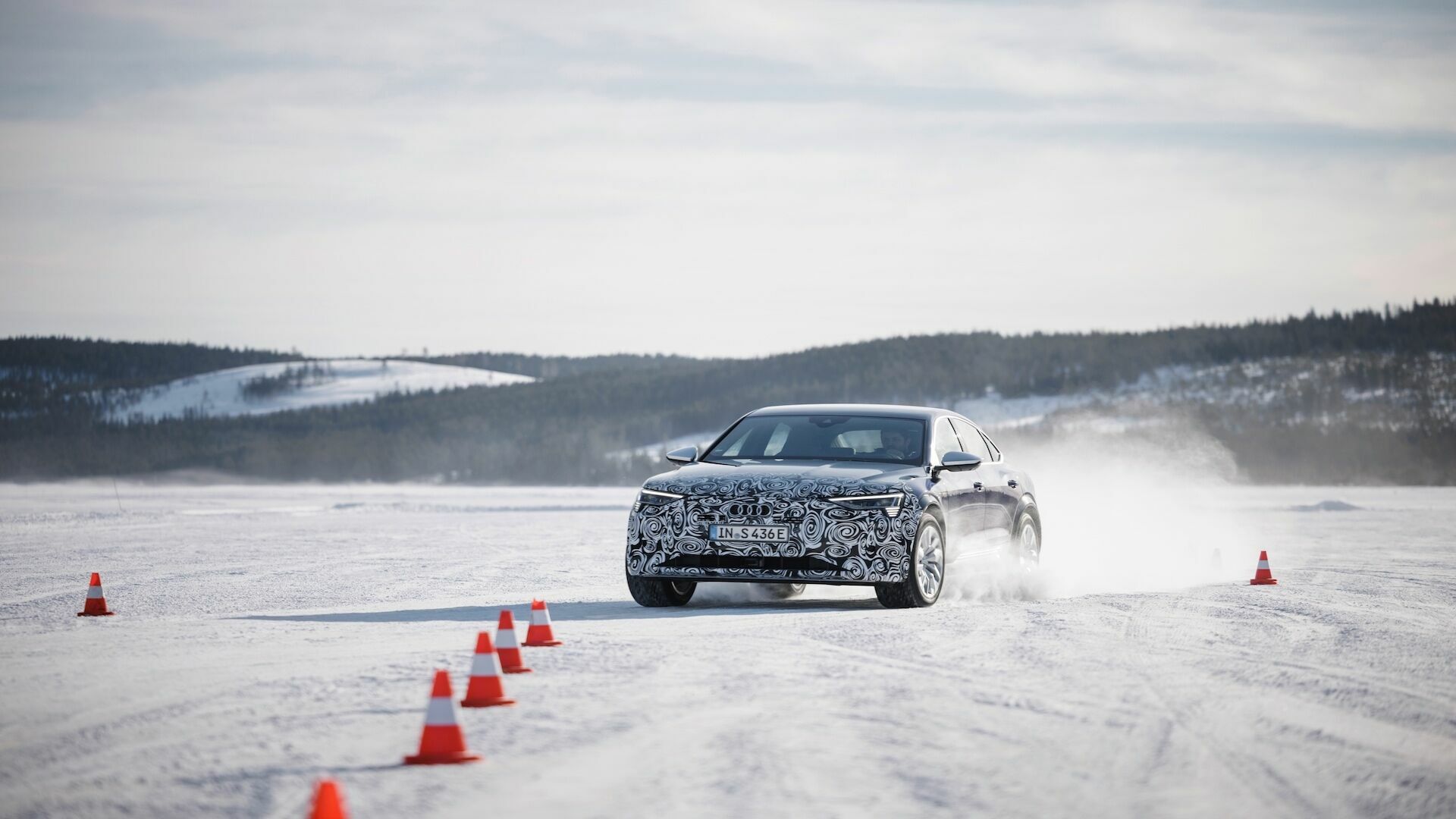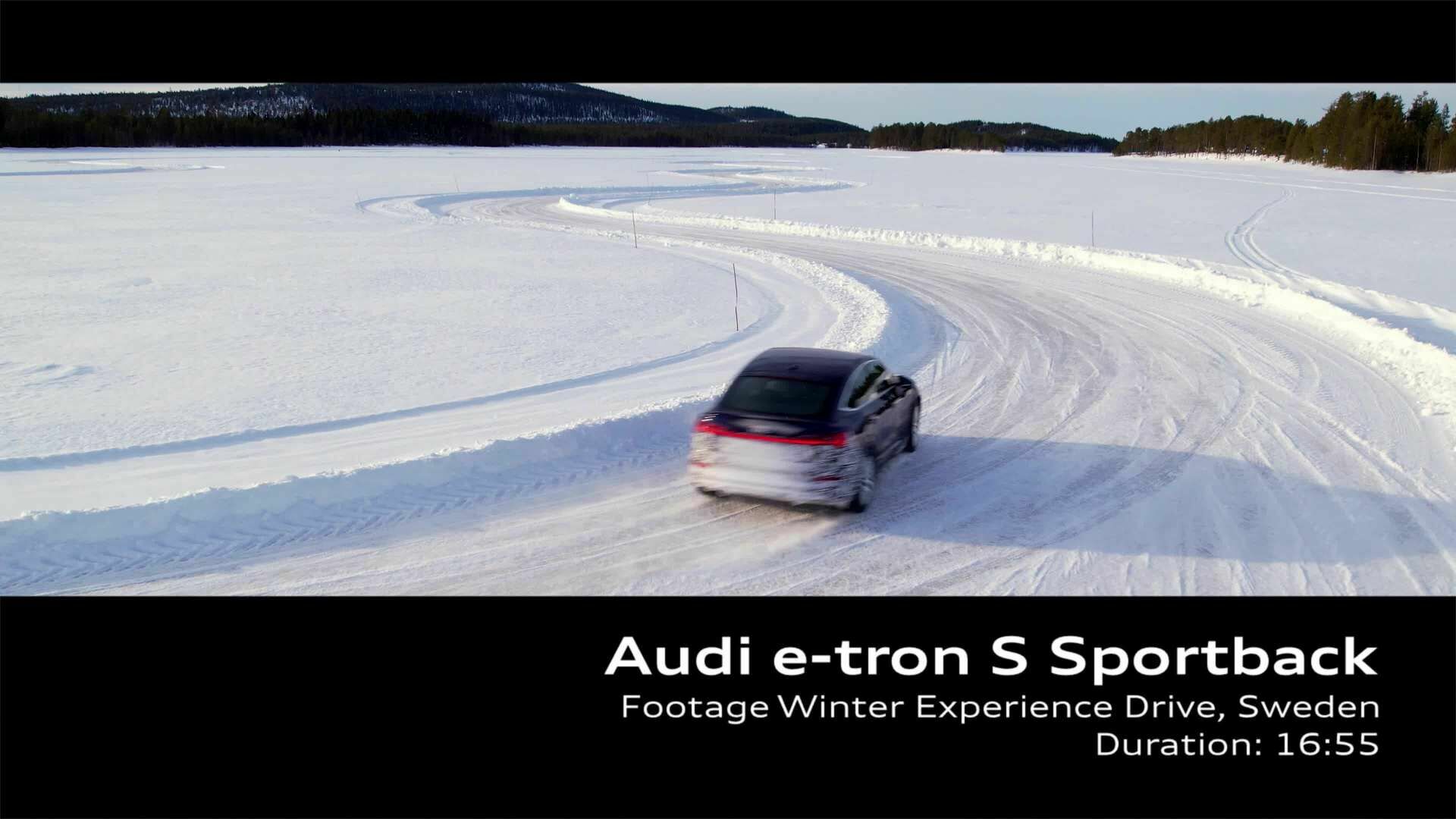Why an Audi drives like an Audi: the Audi DNA in the driving characteristics
- Development, tuning and calibration… all geared toward a distinctive Audi driving experience
- Fundamental criteria underline the typical driving behavior of each and every Audi model
- Intelligent control of an increasingly integrated network of mechatronic chassis components
It’s a feeling most people recognize immediately: This is an Audi! The driving experience is unmistakable, a harmonious balance of driving dynamics and ride comfort. Decisive, in this respect, is a finely integrated interplay between the various components, whether that be suspension, steering, powertrain as well as brake and control systems. The driving DNA, that can be felt and experienced in every Audi, is defined in the concept phase of every model and then realized through both basic and final fine tuning. To achieve their aim Audi developers are guided by fundamental qualities that are used to characterize and assess driving behavior. These are: balanced, solid, controlled, networked, precise and effortless. The outcome is the driving experience that is typical of an Audi.
“An Audi driver has to be able to feel it’s an Audi – in the form of harmonious, distinctive driving characteristics,” says Oliver Hoffmann, Audi Board Member for Technical Development. “The genes of the Audi feeling should be an unmistakable experience for the customer.” That applies to every driving situation, whether that be in stop-and-go traffic, accelerating away from urban areas, driving on twisting roads, changeable road conditions or even overtaking. “That is why the Audi DNA is also firmly entrenched in our electrically powered models,” Hoffmann explains. “At a computer, in the workshop and above all in extensive test drives, subjective and objective assessment criteria flow together in order to continuously sharpen not only the Audi driving characteristics but also the whole technical development.”
Objective criteria support subjective driving tests
An important segment of the test drives are conducted in bitterly cold northern Sweden. Here the emphasis is on finely honing the driving behavior in wintery conditions. Developers carry out subjective test drives, thereby putting their previously defined objective criteria to the test. So called “use cases” like, for example, emergency braking under wintery conditions form the basis of the tests driven. When the developers seek to tune a controlled and therefore predictable and stable driving behavior, objective measurements of initial deceleration and steering support the tuning work.
Straight ahead stability, steering demand, and deceleration build-up are criteria for a rating methodology for ABS braking from various speeds on snow and ice. The results of tuning work flow into an assessment of driving behavior, which the developers document in the form of a spider web chart – a pattern that is applied to all Audi models on a model-specific basis. The foundation for that is the way that the vehicle and its individual characteristics are positioned and how the relevant driving maneuvers and development philosophy are defined. An Audi can be recognized by these driving characteristics: steering response, steering turn-in, traction, and steering properties. Here, the virtues of quattro are quite visible: its particularly unique driving characteristics with respect to traction in curves and straight ahead stability, as well as its steering and behavior during loads changes set the Audi all-wheel drive above the average level of the competition.
Precisely defined tuning philosophy
Audi understands that a controlled driving behavior is defined by a precise and predictable steering response. To achieve these desired driving characteristics the developers follow an established tuning philosophy during test drives on snow and ice. This states that the vehicle should instantly follow the steering input upon entering a curve. Forgiving handling at the apex of the curve and low correction effort upon leaving the curve are also among the obligatory criteria.
The result: a predictable steering angle dependent yaw behaviour combined with a slightly oversteering balance, where understeer is avoided. Audi achieves these by using technologies like torque vectoring, the dual motor rear axle in the e-tron S, or the torque splitter in the RS 3. Developer Oswin Roeder summarizes by saying that “we describe the way that an Audi needs to drive by using objective and subjective criteria. But the subjective criteria are crucial for us as ultimately that is what drivers feel.”
Harmoniously tuned control systems, natural driving experience
Each of the suspension control systems involved is precisely synchronized to the others. None of the systems dominate to the detriment of the driving experience. The driving experience is natural. Dynamic all-wheel steering is intentionally tuned to make a vehicle seem much smaller and manageable without creating a synthetic driving experience in the process. The systems built into an Audi are balanced and always precisely calibrated to one another. When customers order cars with air suspension, they automatically receive a steering tuning that is adjusted for the enhanced characteristics. That also applies to the combination of other systems like electromechanical active roll stabilization (eAWS), active suspension, and torque vectoring.
For instance, the electric quattro in the Audi e-tron S governs the torque on demand, from zero to 100 percent between the front and rear axle. On top of that, there’s electric torque vectoring for increased agility. Each of the rear electric motors distributes the drive torque directly to the wheel without any mechanical differential. This is done proactively in slippery conditions or when cornering quickly, before slippage occurs or the car understeers or oversteers. The result is highly precise handling, which can be adjusted over a wide range via the chassis control systems – from stable to sporty. In sport mode, for instance, the control systems intervene later to enable driving with more oversteer.
Consistent system reactions, reliable driving comfort
All of the vehicle systems involved need to respond consistently and reliably to the current driving conditions irrespective of the nature of the road surface. Ride comfort is a case in point. Finely tuned wheel damping avoids unpleasant phenomena like after-shake, shudder or shake, which are induced by road unevenness and often intensified by powertrain and wheel harmonic oscillation. The end result is the typical Audi ride comfort with vastly reduced secondary vibrations. The driver can hardly perceive interventions in the lateral dynamics; they are, at most, intuitively comprehensible.
Easy car control, even at the limits of grip
Drivers get a secure feeling of vehicle controllability if pronounced oscillation of the vehicle body is avoided when driving over large undulations. Therefore, tuning is intended to produce a car that is easy to control – even at the limits of grip. The underlying philosophy is to convey a feeling of consistent predictability in vehicle response. In the e-tron S, for example, the system engages the torque of the electric motors within only 30 milliseconds of recognizing the driving situation. Mechanical clutches are not utilised to apply torque in the electric all-wheel-drive system, instead electrical power is sent when and where necessary. The precision of this control systems’ interaction with the driver conveys a sense of safety. The steering is direct and gas pedal changes are immediately noticeable. It’s very easy to perceive how the vehicle’s character changes with the selected drive mode. Predictively recognizing driving situations, optimal interaction between subsystems
The mastermind of the regulating systems and control units is the Electronic Chassis Platform (ECP) with its integrated longitudinal and lateral torque distribution. It allows driving situations to be recognized predictively in order to adjust the vehicle as needed. It takes the speed, height values, the car’s vertical, roll, and pitching movements, the friction of the road, the current driving status, and understeering and oversteering into account, as well as information from the suspension systems involved. That network allows the ECP to ensure optimal interaction between the subsystems.
Torque distribution in milliseconds and high perceptibility
Audi aims to provide superior and easily manageable acceleration and deceleration in all driving situations. Audi lateral dynamics provide the driver with unambiguous feedback. When dynamically cornering, the front wheel inside the curve that has less load is slightly slowed down, which prevents slippage and improves handling. The electric torque vectoring in the e-tron S – the shifting of torque between the rear wheels – works similarly and particularly effectively. It happens in milliseconds and can engage extremely high torque for improved lateral dynamics. When the car accelerates out of the curve, the electric drive allocates more torque to the rear wheel on the outside of the curve and less to the rear wheel on the inside of the curve.
Superior traction, controlled handling – typical Audi
Superior traction – especially in difficult winter conditions – and controlled handling are typical driving characteristics for Audi. An Audi should be effortlessly controllable, unperturbed even by the most difficult road conditions. Audi models are easy to manage, they feel both at home in dense urban traffic and on the highway, where they demonstrate unquestionably secure high speed stability. There is always enough power available for passing. To be able to make the best possible use of physical limits, the wheel brake at the limits of grip gently decelerates the wheel on the inside of a curve on the front axle of an e-tron S or on the front and rear axles of an e-tron. This strategy applies more drive torque to the tires on the outside of the curve and increases cornering agility. The traction control system (ASR) acts in milliseconds because Audi shifts individual functional components from the electronic stabilization control (ESC) into the power electronics directly on the electric motors.
The traits described form the framework with which Audi developers characterize and assess driving behavior across models in test drives on both wintery and normal surfaces. That is the only way to achieve what a customer senses when driving an Audi: This is an Audi.
